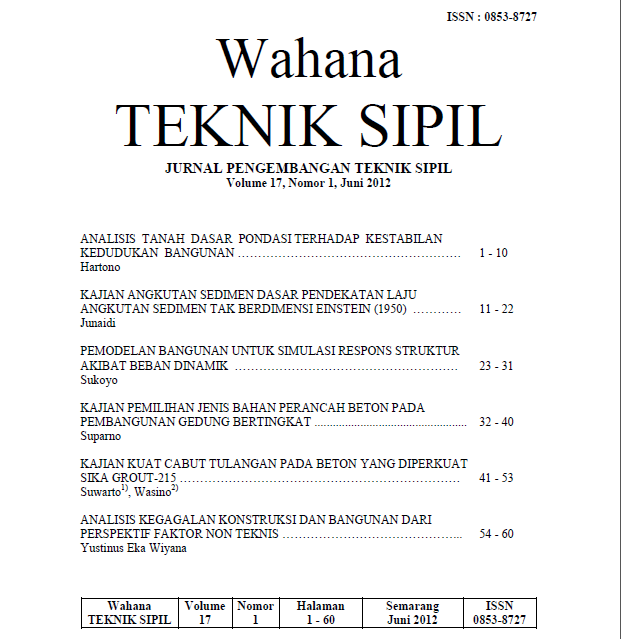Analisis Tanah Dasar Pondasi Terhadap Kestabilan Kedudukan Bangunan
DOI:
https://doi.org/10.32497/wahanats.v17i1.109Keywords:
dwelling, land-uses, housing, soil stability, bearing capacityAbstract
A very influential factor in the development of cities in Indonesia are natural population growth and migration from rural to urban areas. The increase in population led to the need for housing is also being increased. The rice fields and hills farm lot converted into residential complexes. Changes in land use is a major cause floods and landslides. The loads addition in body the slopes by making residential building or villa on the edge of a slope or on a hilltop is a effect risky action landslides. From result testing soil housing in Bukit Mutiara Jaya II, the carrying capacity of the land base is still able to support the weight of the building, namely: QB = 0.217 kg / cm2 <Qall = 0.285 kg/cm2 (still safe). On the case of residential Bukit Mutiara Jaya II decreased and the slope of the walls and cracks in some buildings in the residential location, not because of low soil bearing capacity but due to technical error implementation, it is also prone to landslides because the soil in the form of land use in paving pile above the original ground sloped slopes between 15-40%, which is not compacted properly functioned converted into a dwelling or housing. Where land in a pile on the surface of the slope be spread out natural land directly used for the placement of the building foundation besides causing land subsidence and landslides when it rains, it is also due to the spread of the load is not evenly distributed and downs of the carrying capacity of the land caused by decreased physical and mechanical properties due to the presence of water in the soil body slope..
Downloads
Published
Issue
Section
License
Authors who publish with this journal agree to the following terms:Authors retain copyright and grant the journal right of first publication with the work simultaneously licensed under a Creative Commons Attribution License that allows others to share the work with an acknowledgement of the work's authorship and initial publication in this journal.
Authors are able to enter into separate, additional contractual arrangements for the non-exclusive distribution of the journal's published version of the work (e.g., post it to an institutional repository or publish it in a book), with an acknowledgement of its initial publication in this journal.
Authors are permitted and encouraged to post their work online (e.g., in institutional repositories or on their website) prior to and during the submission process, as it can lead to productive exchanges, as well as earlier and greater citation of published work (See The Effect of Open Access).






